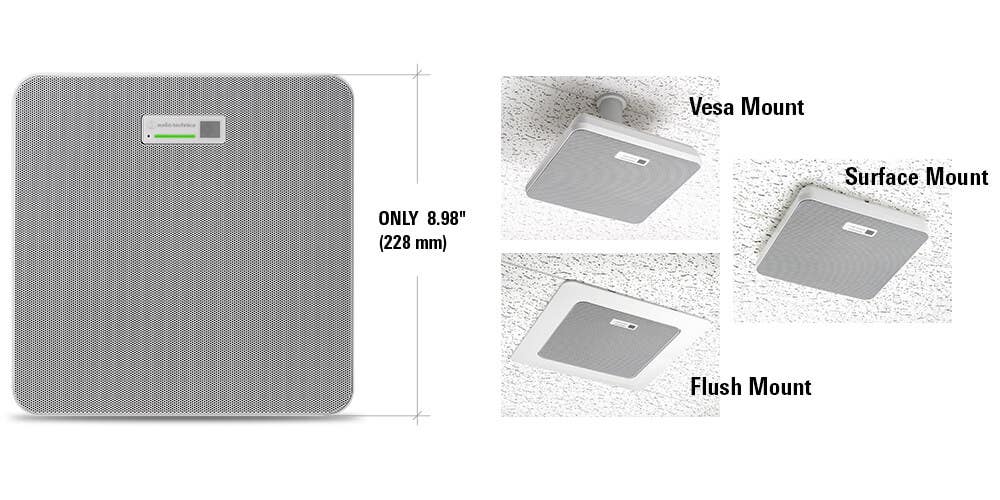If you’ve ever moved closer to the front of the room to better hear the speaker, you know why some rooms could use voice lift. Voice lift technology improves the communication environment in a space where voices don’t carry.
The technology provides mild sound reinforcement that improves intelligibility. It’s not sound amplification throughout a room–just a subtle lift for the areas where it’s more difficult to hear the speaker. In fact, it can be so subtle that you’re more likely to notice it if it goes away.
How Voice Lift Technology Improves Meeting Spaces
Whether it’s a classroom, meeting room, or other type of space, voice lift makes a presenter’s words more intelligible. The technology also alleviates speaker and listener fatigue. The person speaking doesn’t need to strain to be heard, and the people in the back of the room don’t need to strain to listen.
It’s not just room users who benefit. For installers and integrators, they don’t have to worry about wireless microphones for the room. Often, the technology team has to keep track of the transmitter, replace broken mics, and manage mic battery life. Plus, adding wireless mics increases the cost and the complexity of a space.
Instead, the ceiling mounted beamforming microphone feeds a voice lift to the back of the room. The instructor or presenter doesn't have to think about the devices or technology. The biggest benefit is that it just works.
Where and Why to Use Voice Lift
Voice lift technology isn’t necessary in small to medium-sized meeting spaces, but it creates better communication experiences in larger rooms. It can be a challenge to hear clearly in lecture halls, large classrooms, town hall spaces, and other large venues. Those in the back of the room often struggle to hear or rely on the speaker’s use of a gooseneck or other mobile microphone.
Voice lift technology can solve that problem when you designate the room’s loudspeakers into zones. For example, the loudspeakers within a few feet of the presenter won’t need voice lift. But using voice lift with the loudspeakers outside of that zone ensures everyone in the room hears as well as those near the presenter–clearly and without delay.
Room Details for Integrators to Consider
For integrators and users considering voice lift, it helps to remember that the technology is part of a complete audio system–not just the microphone. Here are a few things to consider:
- Room size
- Room design
- Ceiling height
- Room acoustics
- Loudspeaker locations
- Ceiling type (drywall, concrete, drop ceiling with tiles, etc.)
- Room use
Choosing Voice Lift Solutions for Intelligible Audio
Audio-Technica’s ATND1061DAN is a professional beamforming ceiling array microphone that provides voice lift capabilities in addition to clear audio and noise reduction. With Audio-Technica’s adaptive feedback canceler, the microphone is able to provide more voice lift than many other solutions while being less likely to cause feedback.

There are other products on the market that provide voice lift, but they don’t work well if someone gets between the loudspeaker and the beamforming microphone. Even when solutions aren’t causing feedback, the voice quality may drop. The superior feedback cancellation and DSP blocks provide a variety of processing levels which allow for flexibility in loudspeaker vs. microphone placement.
Voice Lift Solutions Create Better Spaces
Taking advantage of technology like voice lift shouldn’t require users to train on or interact with audio solutions. Users should be able to walk into the room and know the system will work. The ATND1061DAN with voice lift is that easy to use, and it helps keep the room uncluttered, aesthetically pleasing to look at, and easy to manage.
At Audio-Technica, we develop audio solutions for every commercial application. If you’re interested in learning more about our portfolio of products, start your journey here.